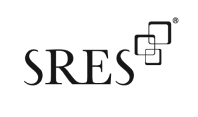Understanding the January Real Estate Trends: 2023–2025
Monday, Feb 10, 2025

As we kick off 2025, a look back at the January real estate trends from the last three years reveals some interesting dynamics. While key metrics show steady growth in home prices, they also highlight a cooling market that’s becoming more challenging for sellers.
Key Trends Over Three Years:
Rising Inventory:
The number of homes listed for sale has steadily increased year-over-year. In January 2023, there were 257 listed properties. This climbed to 340 by January 2024 and inched further to 350 by January 2025. While higher inventory can offer buyers more options, it also adds competitive pressure on sellers.
Higher List and Sale Prices:
Sellers have been setting—and achieving—higher price points. The average list price jumped from $579,602 in 2023 to $629,562 in 2024, and then to $680,944 in 2025. Similarly, the average selling price followed suit, moving from $563,998 in 2023 to $608,476 in 2024, and reaching $655,261 by 2025.
Notable Market Shifts:
Despite rising prices, certain signs point toward a less heated market:
Fewer Homes Selling:
The percentage of inventory that actually sold dipped from 59% in 2023 to just 53% in 2025, indicating a slower market pace.
Increasing Price Reductions:
In 2025, 131 homes experienced price cuts, up from 119 in 2024. Sellers are adjusting their expectations as buyers become more cautious.
More Below-Asking Sales:
The percentage of homes selling below their asking price jumped from 62% in 2024 to 71% in 2025. This trend signals that buyers are negotiating harder or finding that sellers are more willing to compromise.
Days on Market Growing:
Another sign of a cooling market is the slight increase in the average days on market (DOM), which rose from 52 to 54 days. While this is not a dramatic change, it still indicates that homes are taking longer to sell.
What This Means Moving Forward:
These data points collectively suggest that while the market remains active and prices continue to climb, sellers face more hurdles in closing deals. A growing inventory combined with more frequent price reductions and below-asking sales hints at a shift toward a buyer’s market—or at least a more balanced one. Sellers will need to approach pricing and marketing strategies carefully, while buyers may find themselves with a bit more leverage than in previous years.









.jpg)






